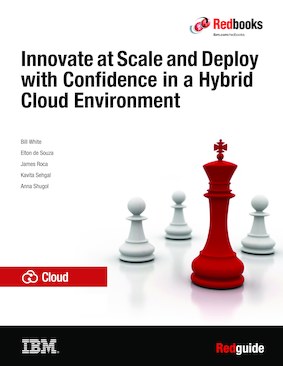Abstract
According to a recent study, CxOs have embraced hybrid cloud as an essential part of their digital transformation strategies. However, there are still several open-ended questions for most when assessing a hybrid cloud platform. This IBM® Redguide® publication examines some common business challenges and provides solutions based on a decade worth of experience. These solutions include:
- Responding to business needs faster
- Reducing IT cost
- Prioritizing digital transformation
- Adopting hybrid cloud as a de facto enterprise model
In early 2020, IBM and Red Hat partnered to deliver a hybrid cloud platform based on the IBM Z® environment and Red Hat OpenShift Platform. Today, Red Hat OpenShift is tightly integrated in the IBM Z and IBM LinuxONE platforms, taking advantage of their strengths in resiliency, performance, security, scalability, agility, and flexibility. Built on Kubernetes, Red Hat OpenShift enables new cloud-native applications to be developed and existing applications to be modernized with speed and flexibility to fuel business growth.
The Red Hat OpenShift Platform on IBM Z and IBM LinuxONE offerings provide solutions to help lower the total cost of ownership (TCO) and allow for more investment in innovation. Cloud-native applications can now be integrated with traditional workloads and business-critical data by virtue of colocation, with containerized applications residing in the same footprint.
The IBM Z and IBM LinuxONE platforms together with Red Hat OpenShift and IBM Cloud Paks help businesses innovate at scale and deploy with confidence in a hybrid cloud environment. As a result, they have a choice for deployment of their modernized applications (build once, deploy anywhere) by using the same tooling and DevOps practices.
This IBM Redguide publication also explores various scenarios that are relevant to workload modernization and colocation when running Red Hat OpenShift and IBM Cloud Paks on IBM Z and IBM LinuxONE platforms.
Table of Contents
Executive summary
Address your business challenges with hybrid cloud
The value case for hybrid cloud on IBM Z and IBM LinuxONE platforms
Use the strengths of IBM Z and IBM LinuxONE platforms for hybrid cloud
Digital modernization and transformation
Colocation for latency reduction
IBM and Red Hat can help
